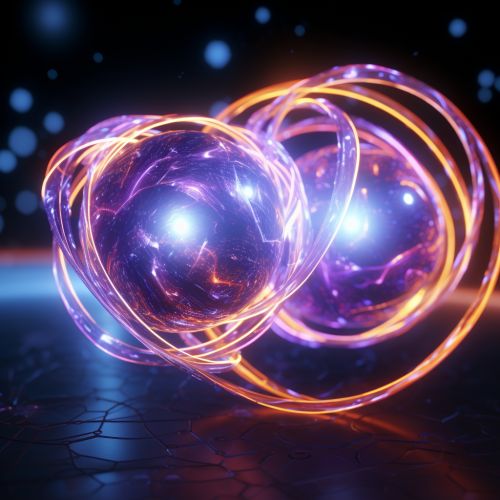Quantum Entanglement in Macroscopic Systems
Introduction
Quantum entanglement is a physical phenomenon that occurs when pairs or groups of particles are generated, interact, or share spatial proximity in ways such that the quantum state of each particle cannot be described independently of the state of the other(s), even when the particles are separated by a large distance. The topic of quantum entanglement in macroscopic systems extends this concept to larger scales, involving more particles and larger distances. This article will delve into the complexities of this subject, exploring the principles, theories, and experiments that have shaped our understanding of quantum entanglement in macroscopic systems.


Principles of Quantum Entanglement
Quantum entanglement is a key principle of quantum mechanics, a branch of physics that describes the behavior of particles at the smallest scales. When particles become entangled, their quantum states become interdependent, meaning the state of one particle is directly related to the state of the other, regardless of the distance between them. This phenomenon, often described as "spooky action at a distance" by Albert Einstein, defies classical intuition and has been the subject of much debate and research in the field of quantum physics.
Quantum Entanglement in Macroscopic Systems
While quantum entanglement is typically associated with microscopic particles such as photons, electrons, and atoms, recent advancements in quantum physics have demonstrated the possibility of entanglement in macroscopic systems. This involves entangling larger numbers of particles and even entire objects, pushing the boundaries of quantum mechanics into the realm of our everyday, macroscopic world.
Theoretical Foundations
The theoretical foundations for quantum entanglement in macroscopic systems stem from the principles of quantum mechanics. The Schrodinger's cat thought experiment, for example, illustrates how quantum superposition could, in theory, apply to macroscopic objects. In this thought experiment, a cat in a box is both alive and dead until observed, reflecting the quantum principle of superposition. This has led to the exploration of how quantum entanglement might apply to larger, more complex systems.
Experimental Evidence
Experimental evidence for quantum entanglement in macroscopic systems has been accumulating over the past few decades. Notable experiments include those conducted by researchers at the Delft University of Technology and the University of Vienna, who have successfully demonstrated entanglement between macroscopic objects at room temperature, and even entanglement between mechanical oscillators, which are macroscopic objects.
Implications and Applications
The realization of quantum entanglement in macroscopic systems has significant implications and potential applications. For instance, it could lead to the development of quantum computers that can process information at unprecedented speeds, or quantum communication systems that offer unparalleled security. Furthermore, it could provide new insights into the nature of reality and the fundamental workings of the universe.
